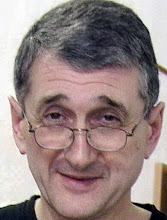In addition to the common natural interest to Synchronous Technology, LEDAS-isicad has its reasons.
First, LEDAS develops its own version of direct modeling - both incorporating it into some applications and providing corresponding technology to the CAD vendors who wish to increase competitiveness of the systems they produce. Second, at isicad.ru we regularly test new capabilities of the latest versions of popular CADs and publish (in Russian) our opinions as for example "3D marches en masse with AutoCAD 2011", "New gimmicks in Inventor 2011", "On-line KOMPAS – in the isicad’s pocket", "From idea to result with SolidWorks-2011", and others.
So it's clear that for long we have wanted to practically see what is Solid Edge with synchronous technology. Unfortunately, out attempt to obtain a trial license for this product was not successful: representatives of the office of Siemens PLM Software in Russia refused to grant such license to us, explaining that staff members of the editorial board of isicad.ru also work for LEDAS.
But recently we were happy to read a detailed characteristics of ST-3 in a remarkable series of dozen posts of Deelip Menezes. Information Deelip shared with the readers have been sufficient enough for Dmitry Ushakov to arrive to some conclusions about ST3, which he formulated in his article published in Russian the next day after Deelip's publications and today published in English translation "Synchronous Technology: the Third Attempt".
Dmitry's paper is not just a retelling of ST-3 features: it characterizes fundamental constituents of direct modeling as a general new generation approach, analyzes consequences of combination of procedural and declarative features, formulates a hypothesis about what is really done in ST-3, gives a list of references including comparatively early research publications, and other.
The paper also compares ST-3 with the approach of LEDAS, in particular Dmitry says:
"... The idea (of the LEDAS approach) is that the end-users work directly with geometry – bypassing the intermediate level in the form of features. In particular, our users can manually set any geometric or dimensional constraint between any geometric or dimensional constraint between any faces, edges, and vertices of a boundary model. What is even more important that our system can automatically recognize most of geometric constraints (parallelism, perpendicularity, coplanarity, coaxiality, tangency, equal distances and radii) and take them into account performing direct modeling operations".
The LEDAS approach is emphasized in the title of one of the previous Dmitry's publications: "Variational Direct Modeling: How to Keep Design Intent in History-Free CAD, 2008, LEDAS Ltd".
Dmitry concludes his paper with the questions: "Synchronous technology is our future but why it has to come in the same package with an obsolete apparatus of history-based parametric modeling? These two approaches can hardly be combined due to significant conceptual differences, and as result a composed solution is controversial and unnatural for the users. Can it happen that Siemens disappoints its users with an excessive complexity of its combined solution? Would it be better to keep synchronous technology in its pure form – without linking to the traditional approach? We will not get the answers to these questions now, but Siemens solution has paved the way to other vendors who may prefer different strategies for launching s similar apparatus. That remains to be seen. In LEDAS we intend to be actively involved in the process".
PS. Perhaps this article will encourage Siemens to grant isicad/LEDAS a trial license for a new version of Solid Edge.

No comments:
Post a Comment